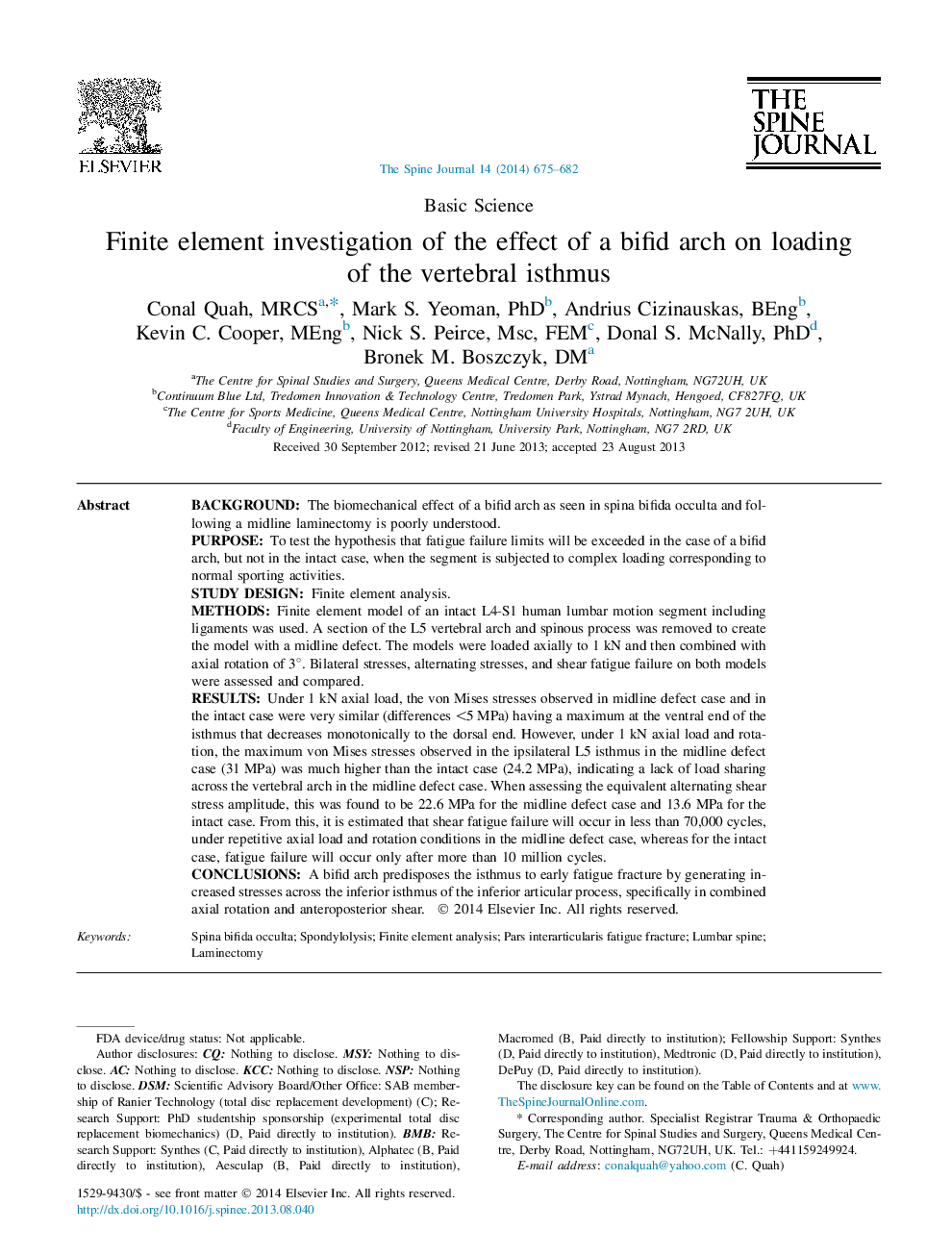| Article ID | Journal | Published Year | Pages | File Type |
|---|---|---|---|---|
| 4097026 | The Spine Journal | 2014 | 8 Pages |
BackgroundThe biomechanical effect of a bifid arch as seen in spina bifida occulta and following a midline laminectomy is poorly understood.PurposeTo test the hypothesis that fatigue failure limits will be exceeded in the case of a bifid arch, but not in the intact case, when the segment is subjected to complex loading corresponding to normal sporting activities.Study designFinite element analysis.MethodsFinite element model of an intact L4-S1 human lumbar motion segment including ligaments was used. A section of the L5 vertebral arch and spinous process was removed to create the model with a midline defect. The models were loaded axially to 1 kN and then combined with axial rotation of 3°. Bilateral stresses, alternating stresses, and shear fatigue failure on both models were assessed and compared.ResultsUnder 1 kN axial load, the von Mises stresses observed in midline defect case and in the intact case were very similar (differences <5 MPa) having a maximum at the ventral end of the isthmus that decreases monotonically to the dorsal end. However, under 1 kN axial load and rotation, the maximum von Mises stresses observed in the ipsilateral L5 isthmus in the midline defect case (31 MPa) was much higher than the intact case (24.2 MPa), indicating a lack of load sharing across the vertebral arch in the midline defect case. When assessing the equivalent alternating shear stress amplitude, this was found to be 22.6 MPa for the midline defect case and 13.6 MPa for the intact case. From this, it is estimated that shear fatigue failure will occur in less than 70,000 cycles, under repetitive axial load and rotation conditions in the midline defect case, whereas for the intact case, fatigue failure will occur only after more than 10 million cycles.ConclusionsA bifid arch predisposes the isthmus to early fatigue fracture by generating increased stresses across the inferior isthmus of the inferior articular process, specifically in combined axial rotation and anteroposterior shear.
